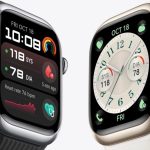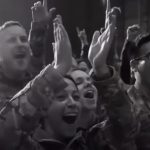
The SBS documentary Punk is better than expected and sent me back to the forgotten classics of punk rock and power pop.
Well I thought, the last thing he world needs is another rehash of the whole punk rock enthusiasm of 1977, but I was persuaded to look it up on SBS On Demand and I was more than pleasantly surprised.
Iggy Pop clearly has a bit of a hand here, so it tends to more nuance.
The first episode starts in Detroit, but quickly moves to downtown New York.
Director Derik Murray has made a very conventional narrative with interviews to camera in nice locations cut with archive footage and stills.
It’s here that he sorts the wheat from the chaff – there is some great archive that I’ve never seen before. The critical issue with punk though and on that is never really examined is that punk was not a music movement but an art experience.
Almost all the key punk rockers were initially art students of some sort.
They brought not just the rama-lama tunes, but a whole bunch of ideas that infected the broader culture.
The Ramones for instance played the dumb suburban kids, but the cover of their first album was a profound statement of style.
While it’s true that every good rock song since 1977 has some of the Ramones DNA in it so too does each pair of jeans without knees or indeed the Ramones T-shirts.
New York punk rock is inextricable with Andy Warhol and the Factory.
Patti Smith wanted to be a beat poet, as did Richard Hell and Tom Verlaine of Television; they were an extension of the literary tradition as much as they were rock & rollers. It was probably the sophistication of the ideas that stood in the way of most of the them having mainstream success.
So much extraordinary music and ideas came out in the first flush of punk rock from 1976 to 1980. While we all recall Talking Heads and Blondie and Patti Smith, many of the more minor players have been unfairly or unfortunately ignored. So, here’s a short list:
Adventure by Television. The debut LP Marquee Moon remains one of the great rock & roll records of all time.
A perfect album. The follow-up lacks the darkness and he amphetamine angst of that record but has simple elegiac playing over dreamlike melodies and is almost as good as the debut.
Richard Hell, Television’s original bass player, created a manifesto with the album Blank Generation. The unique styling of Robert Quine’s guitar lines complements Hell’s serrated poetry.
Television’s guitar player Richard Lloyd’s solo lp Alchemy is a beautiful piece of power pop. The best pop record of the era was the Nerves 4 track EP.
One song was Hanging on the Telephone. And the other was When You Find Out. Pinnacles of the genre.
Not everyone makes it. Scenester Marty Thau put together a compilation of coming New York bands called 2×5 that features the Bloodless Pharaoh’s (with future Stray Cat Brian Setzer) and the Fleshtones, one of the great rock & roll bands.
Alex Chilton, who had been a teen idol with the Box Tops (The Letter) in the ’60s gravitated to New York to go to seed leaving moments of brilliance on the way, especially the single Bangkok.
Also going to seed was Jim Carroll, known as a poet. He condensed all of his book The Basketball Diaries into one song People Who Died that remains a classic.
An artist, who was a seminal figure at the time, perhaps more important than any other was John Cale.
He had been a founder of the Velvet Underground ho paved the way for all this music and he went into record production making the first Stooges album, the first Patti smith album, the first Modern Lovers record, Brian Eno’s Another Green World and Marie et les Garcons‘ Re-Bop – and other seminal records.
His own work – Paris 1919, Helen of Troy, Slow Dazzle – in the ‘70s was also influential in creating punk.
Yoko Ono was an equally seminal figure. She came from an art background and with that sensibility, deconstructed the pop music her husband, John Lennon, had made.
Albums like Fly and Approximately Infinite Universe set a template that the world only started appreciating in the 1990s, and Yoko’s DNA is at the core of contemporary alt rock and hip hop.
My sentimental favourite from the day was So Alone (kind of an appropriate title, right?) by Johnny Thunders.
Johnny had left the New York Dolls and moved to London in search of heroin.
In between blasts he made this album with help from Sex Pistols, Chrissie Hynde, and Steve Marriott from the Small Faces.
As raggedy as Johnny at his best, the album runs through some standards such as the Shangrila’s Give Him A Great Big Kiss and a crushing version of Pipeline.
The standout here is You Can’t Put Your Arms Around A Memory. It’s melancholic but not sentimental.
Thunders had by this time lived for a thousand years and you hear that in his voice and the keening, sustained notes of the guitars.
Johnny was the template for what people thought of punk rock; he loved the elegance and the mastery of classic pop, but he brought the danger. It’s unfortunate that there are no rock stars like him left.
Toby Creswell is a music journalist and pop-culture writer, as well as a former editor of Rolling Stone (Australia) and founding editor of Juice.
The post Coronavirus music: The forgotten classics of punk rock and power pop appeared first on The New Daily.
Powered by WPeMatico







